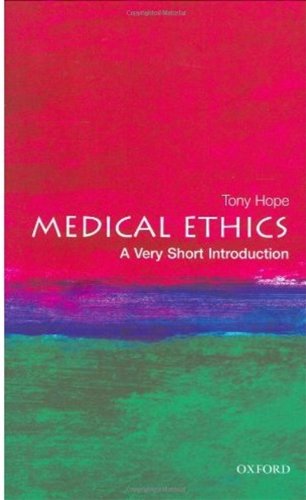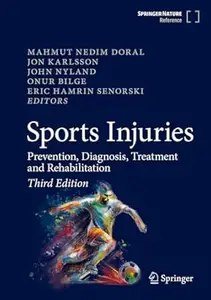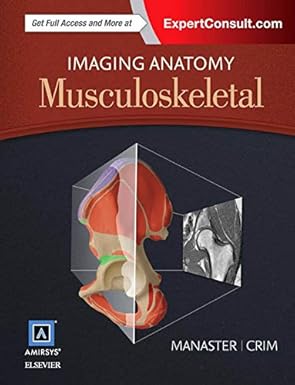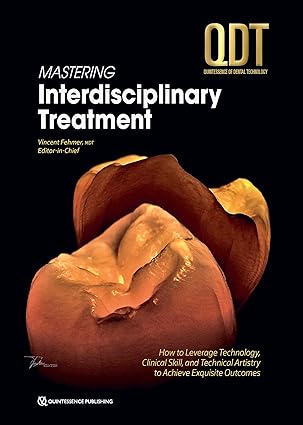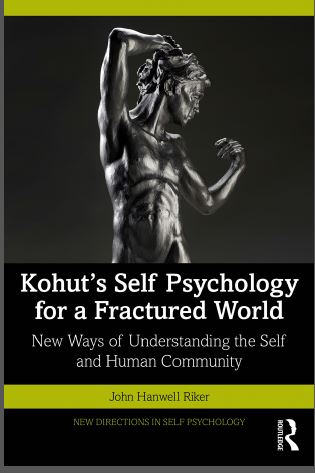Playing the Nazi card There is a common, but invalid, argument against euthanasia that I call ‘playing the Nazi card’. This is when the opponent of euthanasia says to the supporter of euthanasia: ‘Your views are just like those of the Nazis’. There is no need for the opponent of euthanasia to spell out the rhetorical conclusion: ‘and therefore your views are totally immoral’. Let me put the argument in a classic form used in philosophy and known as a syllogism (I will say more about syllogisms in Chapter 5): Premise 1: Many views held by Nazis are totally immoral. Premise 2: Your view (support for euthanasia under some circumstances) is one view held by Nazis. Conclusion: Your view is totally immoral. This is not a valid argument. It would be valid only if all the views held by Nazis were immoral. I will therefore replace premise 1 by premise 1* as follows: Premise 1*: All views held by Nazis are totally immoral. In this case the argument is logically valid, but in order to assess whether the argument is true we need to assess the truth of premise 1*. 8 Medical Ethics There are two possible interpretations of premise 1*. One interpretation is a version of the classic false argument known as argumentum ad hominem (or bad company fallacy): that a particular view is true or false, not because of the reasons in favour or against the view, but by virtue of the fact that a particular person (or group of people) holds that view (see Warburton, 1996). But bad people may hold some good views, and good people may hold some bad views. It is quite possible that a senior Nazi was vegetarian on moral grounds. This fact would be irrelevant to the question of whether there are, or are not, moral grounds in favour of vegetarianism. What is important are the reasons for and against the particular view, not the person who holds it. Hitler’s well-known vegetarianism, by the way, was on health, not on moral, grounds (Colin Spencer, 1996). The other, more promising, interpretation of premise 1* is that those views that are categorized as ‘Nazi views’ are all immoral. Some particular Nazis may hold some views about some topics that are not immoral, but those would not be ‘Nazi views’. The Nazi views being referred to are a set of related views, all immoral, that are driven by racism and involve killing people against their will and against their interests. Thus, when it is said that euthanasia is a Nazi view, what is meant is that it is one of these core immoral views that characterize the immoral Nazi worldview. The problem with this argument, however, is that most supporters of euthanasia – as it is practised in the Netherlands for example – are not supporting the Nazi worldview. Quite the contrary. Those on both sides of the euthanasia debate agree that the Nazi killings that took place under the guise of ‘euthanasia’ were grossly immoral. The point at issue is whether euthanasia in certain specific circumstances is right or wrong, moral or immoral. All depends on being clear about these specific circumstances and being precise about what is meant by euthanasia. Only then can the arguments for and against legalizing euthanasia be properly evaluated. What is needed is some conceptual clarity. 9 Euthanasia Clarifying concepts in the euthanasia debate Let us begin with some definitions (see next page). The purpose of these is twofold: to make distinctions between different kinds of euthanasia; and to provide us with a precise vocabulary. Such precision is often important in evaluating arguments and reasons. If a word is used in one sense at one point in the argument, and in another sense at another point in the argument, then the argument may look valid when in fact it is not. If you study these definitions it will be immediately clear that playing the Nazi card rides roughshod over some important distinctions. The first point is that the term euthanasia, at least as I am suggesting that it should be used, implies that the death is for the person’s benefit. What the Nazis did was to kill people without any consideration of benefit to the person killed. The second point 3. Those opposed to active voluntary euthanasia often play the ‘Nazi card’. 10 Medical Ethics Euthanasia and suicide: some terms Euthanasia comes from the Greek eu thanatos meaning good or easy death. Euthanasia: X intentionally kills Y, or permits Y’s death, for Y’s benefit. Active euthanasia: X performs an action which itself results in Y’s death. Passive euthanasia: X allows Y to die. X withholds or withdraws life-prolonging treatment. Voluntary euthanasia: Euthanasia when Y competently requests death himself, i.e. a competent adult wanting to die. Non-voluntary euthanasia: Euthanasia when Y is not competent to express a preference, e.g. Y is a severely disabled newborn. Involuntary euthanasia: Death is against Y’s competent wishes, although X permits or imposes death for Y’s benefit. Suicide: Y intentionally kills himself. Assisted suicide: X intentionally helps Y to kill himself. Physician assisted suicide: X (a physician) intentionally helps Y to kill himself. (Adapted from T. Hope, J. Savulescu, and J. Hendrick, Medical Ethics and Law: The Core Curriculum (Churchill Livingstone, 2003).) Euthanasia is that euthanasia can be voluntary, involuntary, or non-voluntary. The third point is that it can be active or passive. Let us start with the first point.
چکیده فارسی
بازی کارت نازی استدلال رایج، اما نامعتبر، علیه اتانازی وجود دارد که من آن را «بازی با کارت نازی» می نامم. این زمانی است که مخالف اتانازی به طرفدار اتانازی می گوید: "دیدگاه شما دقیقاً مانند دیدگاه نازی ها است". نیازی نیست که مخالف اتانازی نتیجهگیری بلاغی را بیان کند: «و بنابراین دیدگاههای شما کاملاً غیراخلاقی است». اجازه دهید بحث را به شکل کلاسیکی که در فلسفه استفاده میشود و به عنوان قیاسشناسی شناخته میشود بیان کنم (در فصل 5 بیشتر در مورد قیاسها خواهم گفت): پیشفرض 1: بسیاری از دیدگاههای نازیها کاملاً غیراخلاقی هستند. فرض 2: دیدگاه شما (حمایت از اتانازی تحت برخی شرایط) یکی از دیدگاه های نازی ها است. نتیجه: دیدگاه شما کاملا غیر اخلاقی است. این استدلال معتبری نیست. این تنها در صورتی معتبر خواهد بود که تمام نظرات نازی ها غیراخلاقی باشد. بنابراین من فرض 1 را با فرض 1* به صورت زیر جایگزین می کنم: فرض 1*: همه دیدگاه های نازی ها کاملا غیر اخلاقی هستند. در این مورد، استدلال از نظر منطقی معتبر است، اما برای ارزیابی درستی استدلال، باید صدق فرض 1* را ارزیابی کنیم. 8 اخلاق پزشکی دو تفسیر ممکن از فرض 1* وجود دارد. یک تفسیر نسخه ای از استدلال غلط کلاسیک است که به عنوان argumentum ad hominem (یا مغالطه شرکت بد) شناخته می شود: که یک دیدگاه خاص درست یا نادرست است، نه به دلیل دلایل موافق یا مخالف آن، بلکه به دلیل این واقعیت است که یک شخص خاص (یا گروهی از مردم) آن دیدگاه را دارد (به Warburton، 1996 مراجعه کنید). اما افراد بد ممکن است دیدگاه های خوبی داشته باشند و افراد خوب ممکن است دیدگاه های بدی داشته باشند. کاملاً ممکن است که یک نازی ارشد به دلایل اخلاقی گیاهخوار بوده باشد. این واقعیت به این پرسش که آیا زمینه های اخلاقی به نفع گیاهخواری وجود دارد یا نه، بی ربط خواهد بود. آنچه مهم است دلایل موافق و مخالف دیدگاه خاص است، نه شخصی که آن را دارد. به هر حال، گیاهخواری شناخته شده هیتلر بر اساس سلامتی بود، نه به دلایل اخلاقی (کالین اسپنسر، 1996). تفسیر امیدوارکنندهتر از فرض 1* این است که دیدگاههایی که به عنوان «دیدگاههای نازی» طبقهبندی میشوند، همگی غیراخلاقی هستند. برخی از نازیهای خاص ممکن است درباره برخی موضوعات غیراخلاقی نظراتی داشته باشند، اما اینها «دیدگاههای نازی» نیستند. دیدگاههای نازیها مجموعهای از دیدگاههای مرتبط هستند که همگی غیراخلاقی هستند که ناشی از نژادپرستی هستند و شامل کشتن مردم بر خلاف میل و منافعشان میشوند. بنابراین، وقتی گفته میشود اتانازی یک دیدگاه نازی است، منظور این است که یکی از این دیدگاههای غیراخلاقی هستهای است که مشخصه جهانبینی غیراخلاقی نازیهاست. اما مشکل این استدلال این است که اکثر حامیان اتانازی - همانطور که برای مثال در هلند انجام می شود - از جهان بینی نازی ها حمایت نمی کنند. کاملا برعکس. کسانی که در هر دو طرف بحث اتانازی هستند موافقند که قتلهای نازیها که تحت عنوان «اتانازی» انجام شد، به شدت غیراخلاقی بود. نکته مورد بحث این است که آیا اتانازی در شرایط خاص درست است یا نادرست، اخلاقی است یا غیراخلاقی. همه چیز به روشن بودن در مورد این شرایط خاص و دقیق بودن در مورد اینکه منظور از اتانازی چیست بستگی دارد. تنها در این صورت است که می توان استدلال های موافق و مخالف قانونی کردن اتانازی را به درستی ارزیابی کرد. آنچه مورد نیاز است کمی وضوح مفهومی است. 9 اتانازی شفاف سازی مفاهیم در بحث اتانازی اجازه دهید با برخی از تعاریف شروع کنیم (به صفحه بعد مراجعه کنید). هدف از این دو چیز است: ایجاد تمایز بین انواع مختلف اتانازی. و واژگان دقیقی را در اختیار ما قرار دهد. چنین دقتی اغلب در ارزیابی استدلال ها و دلایل مهم است. اگر کلمه ای در نقطه ای از استدلال به معنایی و در نقطه ای دیگر از استدلال به معنایی دیگر استفاده شود، آنگاه ممکن است استدلال معتبر به نظر برسد در حالی که در واقع چنین نیست. اگر این تعاریف را مطالعه کنید، فوراً مشخص می شود که بازی با کارت نازی بر برخی از تمایزات مهم غلبه می کند. اولین نکته این است که اصطلاح اتانازی، حداقل همانطور که من پیشنهاد می کنم باید استفاده شود، دلالت بر این دارد که مرگ به نفع شخص است. کاری که نازی ها انجام دادند کشتن مردم بدون در نظر گرفتن منفعت برای فرد کشته شده بود. نکته دوم 3. کسانی که مخالف اتانازی داوطلبانه فعال هستند، اغلب «کارت نازی» را بازی می کنند. 10 اخلاق پزشکی اتانازی و خودکشی: برخی از اصطلاحات اتانازی از واژه یونانی eu thanatos به معنای مرگ خوب یا آسان گرفته شده است. اتانازی: X عمدا Y را می کشد، یا اجازه مرگ Y را به نفع Y می دهد. اتانازی فعال: X عملی را انجام می دهد که خود منجر به مرگ Y می شود. اتانازی غیرفعال: X به Y اجازه می دهد بمیرد. X درمان طولانیمدت را متوقف میکند یا قطع میکند. اتانازی داوطلبانه: اتانازی زمانی اتانازی زمانی که Y با صلاحیت خود درخواست مرگ می کند، یعنی بزرگسالی شایسته که می خواهد بمیرد. اتانازی غیر داوطلبانه: اتانازی زمانی که Y صلاحیت بیان ترجیحی را نداشته باشد، به عنوان مثال. Y یک نوزاد ناتوان شدید است. اتانازی غیرارادی: مرگ بر خلاف میل شایسته Y است، اگرچه X به نفع Y اجازه مرگ را می دهد یا آن را تحمیل می کند. خودکشی: Y عمداً خود را می کشد. کمک به خودکشی: X عمدا به Y کمک می کند تا خود را بکشد. خودکشی با کمک پزشک: X (یک پزشک) عمدا به Y کمک می کند تا خود را بکشد. (برگرفته از T. Hope, J. Savulescu, and J. Hendrick, Medical Ethics and Law: The Core Curriculum (چرچیل لیوینگستون، 2003). اتانازی این است که اتانازی می تواند داوطلبانه، غیرارادی یا غیر ارادی باشد. نکته سوم این است که می تواند فعال یا غیرفعال باشد. اجازه دهید با اولین نکته شروع کنیم.
ادامه ...
بستن ...
need to be met in order for a patient to be detained in hospital for treatment: (1) he should suffer from a mental disorder; (2) his mental disorder is ‘of a nature or degree which makes it appropriate to receive medical treatment in a hospital’; (3) the admission for treatment ‘is necessary for the health or safety of the patient or for the protection of other persons’. I have already considered the inequities inherent when considering the protection of others. I want now to consider the ‘health and safety’ of the person himself. What is of note about the Mental Health Act is that a person who has a mental disorder may be treated for his mental disorder despite refusal even if he is competent to give or refuse consent. A competent person with a mental illness can be treated against his will if others (such as a psychiatrist and social worker) think it is appropriate. This is unjust unless anyone with a mental disorder is ipso facto not competent to refuse treatment. But this is not the case. The question of whether someone has a mental disorder is a question left mainly to doctors and it covers many psychological problems which cause distress. Some people with a mental disorder will lack decision-making capacity. Some won’t. The issue came under legal scrutiny in England in the case of B v Croydon District Health Authority (1994). This concerned a 24-year-old woman who had been admitted to psychiatric hospital with a diagnosis of borderline personality disorder. She had a history of self-harm. She was compulsorily detained under the Mental Health Act following her behaviour of trying to cut and hurt herself. In hospital she was prevented from such harmful behaviour, but her response was to virtually stop eating and as a result her weight fell to dangerously low levels. By May 1994 her weight was only 32 kilos and her doctor thought that she would die within a few months if she continued to behave as she was doing. 84 Medical Ethics Chapter 7 How modern genetics is testing traditional confidentiality What a prodigious thing it is that within the drop of semen which brings us forth there are stamped the characteristics not only of the bodily form of our forefathers but of their ways of thinking and their slant of mind. Where can that drop of fluid lodge such an infinite number of Forms? . . . We can assume that it is to my father that I owe my propensity to the stone, for he died dreadfully afflicted by a large stone in the bladder . . . Now I was born twenty-five years . . . before he fell ill . . . During all that time where did that propensity for this affliction lie a-brooding? When his own illness was still so far off, how did that little piece of his own substance which went to make me manage to transmit so marked a characteristic to me? And how was it so hidden that I only began to be aware of it forty-five years later . . . ? (Montaigne, ‘On the Resemblance of Children to their Fathers’) The fifth metacarpal is the bone that runs along the edge of the palm of the hand between the wrist and the base of the little finger. A fracture to this bone near to the knuckle can result in one way only: from punching someone or something with a clenched fist. Patients, of course, may not like to admit this; but the fracture discloses the truth. Modern genetics, increasingly, is able both to reveal the past and to foretell the future. And it goes further. A genetic test from one 86
ادامه ...
بستن ...
